June 21, 2025 | 17:11 GMT +7
June 21, 2025 | 17:11 GMT +7
Hotline: 0913.378.918
June 21, 2025 | 17:11 GMT +7
Hotline: 0913.378.918

Desolate Ben Giang. Photo: Hoang Anh.
Ben Giang in the aftermath of the third severe typhoon. Tran Trong Tuan, a youth pioneer in marine farming in Hoang Tan island commune, Quang Yen town, Quang Ninh province, sat amid the completely devastated surroundings, as if things could not be more destroyed.
From the center of Quang Yen town, the island commune of Hoang Tan appears as a narrow stretch of land that rises amidst the vast Yen Lap lagoon and Cai Be island, with a view of Tuan Chau island and Ha Long Bay. The people of Hoang Tan have been relying on the sea to sustain themselves for generations, as the territory spans over 4,000 hectares, with over half of it being sea surface.
They believed that they were already well-versed in storms and natural calamities, as they knew the tides by heart. However, this severe storm left over 1,000 households, or nearly 4,000 individuals, unable to respond in time. In an instant, an entire marine area that had been meticulously planned by Quang Ninh province and was progressing through the procedures for marine farming permits was devastated.
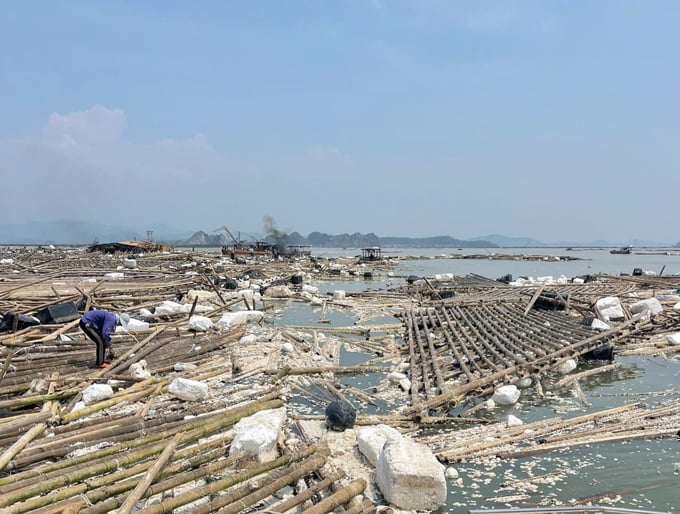
Hoang Tan marine farming area after storm No. 3. Photo: Hoang Anh.
Mr. Dam Chi Thiet, an officer from Quang Yen town who was appointed as the Party Secretary of Hoang Tan commune, was taken aback by the situation. He exclaimed, "After years of attempts by the government and the people to construct and consolidate everything, a single storm has completely destroyed it."
Schools, commune offices, and the cultural center were each devastated, resulting in the loss of roofs on 1,040 residences. The most significant losses were in aquaculture, with the destruction of 2,016 oyster and ocean clam farming cages, 36 fish pools, and nearly the entire area outside the dike.
The most lamentable are the over 281 oyster and clam farming households in the commune, as well as those from outside who had come to farm. About a decade ago, oyster and ocean clam cultivation in Hoang Tan and other communes of Quang Yen town became a "gold mine" in the sea due to the estuarine advantages, large area, and suitable salinity of this marine area. Aquaculture was the catalyst for the financial prosperity of numerous families.
The following year, they expanded their farms by investing in additional cages and purchasing additional stock, following a successful year. The bank received their valuable assets, including land use rights, to "place a bet on the sea."
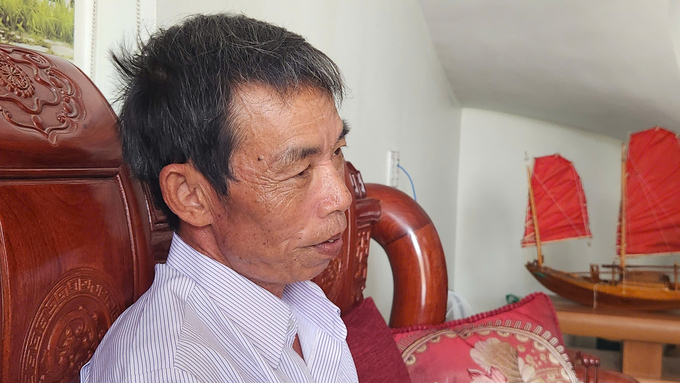
Mr. Tran Van Hoan, Tran Huy Aquaculture Cooperative. Photo: Tien Thanh.
Immediately following the conclusion of typhoon No. 3, commune officers and rescue forces conducted door-to-door assistance to individuals in the process of clearing trees, repairing homes, and recovering from the damage. However, nearly every household appeared bewildered, as if they had lost their very souls. The sea was the sole focus of their attention; all of their investments were now obsolete. They were not only lamenting their losses but also apprehensive about the bank reclaiming their debts, which prevented anyone from contemplating what the future might hold. Quang Yen town sustained losses exceeding VND 2,305 billion as a result of cyclone No. 3, according to preliminary estimates. Aquaculture losses constitute approximately VND 2,100 billion of this total.
The family of Tran Van Hoan (64 years old) sustained the most severe losses among the marine farming households in Hoang Tan commune that were all but destroyed by the typhoon. The spouse remained seated, smoking cigarettes, and gazing out the door as if in a state of trance for days following the storm.
They were unable to clean up the mess, despite the fact that the storm toppled trees in the yard and blew the roof off their home, scattering them throughout the area. In the interim, his wife's condition deteriorated, resulting in her falling ill. She alternated between weeping while standing and crying while sitting. Their household had the appearance of a funeral, despite the fact that they were once a wealthy family, among the wealthiest in the commune. In the photographs on Mr. Hoan's phone, which he had taken just prior to the typhoon, all 80,000 ocean oyster lines were now but a memory.
Mr. Hoan stated with difficulty, "A Chinese buyer arrived at the beginning of August and placed a deposit of 1 billion VND for two pairs of ocean oyster cages. He intended to retrieve the cages by mid-September in order to sell them for the Mid-Autumn Festival." However, who could have anticipated that the typhoon would arrive and destroy everything? In addition to the cages that were prepared for harvest, the newly installed cages and those that had been farmed for 1-2 years were also lost. In total, the sea foam carried away 20 cages that occupied 32,000 square meters of oyster aquaculture territory. Despite their mental preparation for some losses from the storm, they never anticipated the extent of their losses.

The devastation of Hoang Tan's sea. Photo: Tien Thanh.
Immediately following the storm, a number of farming households in the cooperative launched their boats to the vicinity of the Nha Den (Lighthouse) to investigate the farming area. However, they were unable to find anything beyond a white expanse. They continued their search by boat for an additional two days, but they were unable to locate any evidence. Only a few oyster lines that had survived were recovered on the third day; however, they were beyond salvaging due to the storm's destruction and disintegration.
Seven additional members of the Tran Huy Aquaculture Cooperative encountered comparable circumstances, with the sole distinction being the magnitude of their losses.
This catastrophe, which Mr. Binh compared to a knockout strike, left the marine farmers in a state of disarray, rendering it challenging for them to even stand up, let alone rebuild. The losses were more severe as the farm grew larger and the startup date was earlier.
A member of the Tran Huy Aquaculture Cooperative was unafraid to admit that his family was presently in debt to the bank for over 5 billion VND.
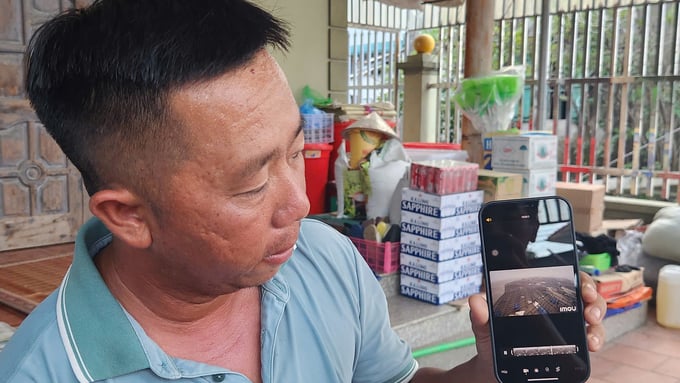
The mobile phone is the only remaining asset. Photo: Tien Thanh.
Returning to the story of Tran Trong Tuan, a young man from Hoang Tan commune who is unafraid to consider and act. In 2015, Tuan was the first to establish a large-scale marine farming enterprise in Hoang Tan. He was the owner of 10 pairs of ocean oyster rafts and the manager of 26 pairs of rafts for two other enterprises in the Lach Tuong area prior to the third storm.
Tuan presented me with images of the rafts prior to and following the typhoon on his phone. He stated, "It now resembles a battlefield devoid of debris." Tuan personally lost approximately 4-5 billion dong, while both companies sustained damages totaling approximately 30 billion dong. In a single moment, Storm No. 3 transformed these "model pioneers" into debtors.
There was insufficient time to sit about and lament the casualties. Every hour, Tuan was required to board a boat to Lach Tuong due to the fact that the typhoon had caused the rafts and floating houses to become twisted, rendering it impossible to determine the ownership of each item. Additionally, numerous individuals from outside the area exploited the natural catastrophe to plunder, capturing fish and oysters, severing buoys, and stealing rafts. The proprietors of the rafts encountered challenges in recruiting individuals to protect their property due to their inability to afford labor.
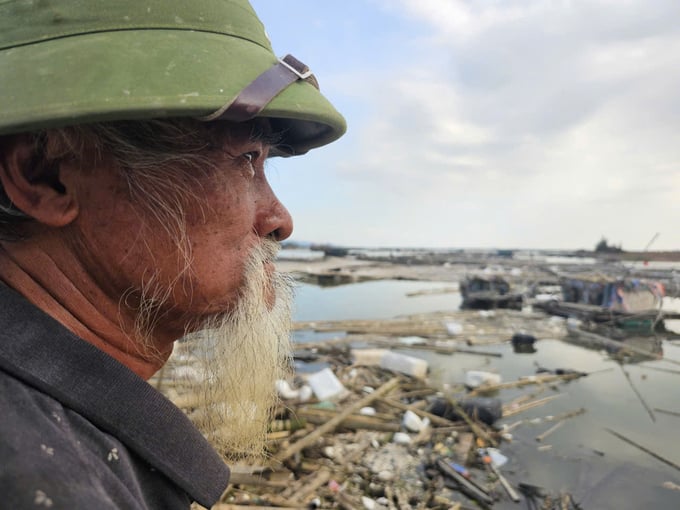
Mr. Dinh Van Bao, a marine farmer in Hiep Hoa. Photo: Hoang Anh.
Many new startups and large-scale marine farmers from Hoang Tan, Tan An, Ha An, and other communes with large aquaculture areas in Quang Yen town share the same fate of 'total devastation' as Tran Trong Tuan. These modern marine cultivators, who were still struggling to recover from the storm's devastation, were now confronted with the issue of looting. Tuan reported that in certain farming regions, "gangs" from the shore arrived to seize rafts and fish cages from the residents, resulting in an extremely complex situation.
In Ben Giang, an area that is near the communes of Hoang Tan, Tan An, and Hiep Hoa, I encountered numerous elderly individuals who were sitting peacefully and gazing out at the sea. Their offspring were endeavoring to salvage what was left, but the situation appeared to be hopeless. Dinh Van Bao, a 75-year-old resident of Thon 6 in Hiep Hoa commune, summarized, "The fortunate households may have retained one-tenth of their property; the majority have lost everything."
In marine aquaculture, Bao's family, like many others, was involved for two to three generations. People with limited capital invested a few hundred million dong, while those with more capital invested 5-7 billion dong. The family's fish and cobia cages, which were situated near the lagoon, were not expected to be significantly impacted by the hurricane. Nevertheless, the typhoon was so powerful that it blew oyster rafts from the harbor into a pile on top of the fish cages and floating houses, resulting in a loss of nearly 2 billion dong.
Translated by Linh Linh
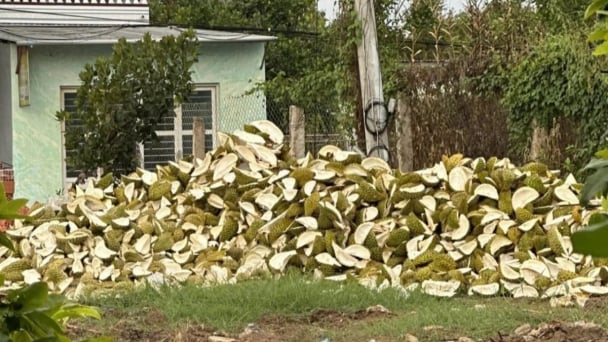
(VAN) The waste of resources from agricultural by-products and the situation of counterfeit and poor quality goods in production causing losses of thousands of billions were pointed out by the National Assembly deputy.
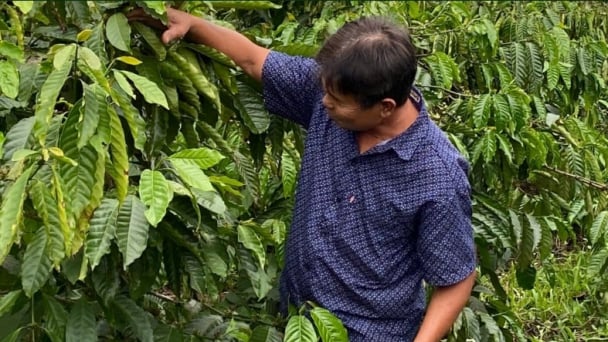
(VAN) After 5 years of implementation, the CAI initiative has helped coffee growers change their farming practices, moving toward responsible agriculture that meets global export standards.
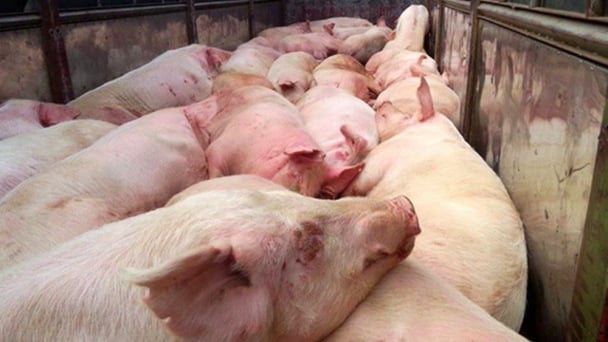
(VAN) The primary prerequisite for the comprehensive and robust integration of Vietnam's livestock sector into the global value chain is the establishment of a disease control system.

(VAN) The results of national programs are essential for establishing a contemporary livestock sector that is well-equipped to meet the demands of both domestic and international markets, with robust biosafety standards.
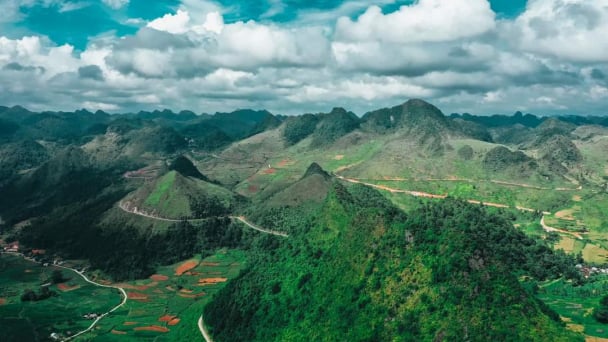
(VAN) The UNESCO Global Geopark revalidation of Non nuoc Cao Bang and the transition to a two-tier administrative model are presently undergoing a pivotal moment in Cao Bang, the northernmost province of Vietnam.
/2025/06/13/5330-2-004539_953.jpg)
(VAN) Changing policy mindset and removing investment barriers are urgent requirements to open up new development space for enterprises in the agricultural sector.

(VAN) The areas include the restoration of five million hectares of marine ecosystems.